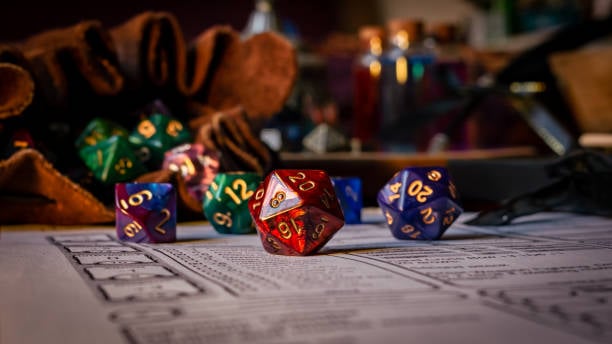JRR Tolkien is a world-renowned fantasy author who is best known for writing the trilogy The Lord of the Rings and The Hobbit. But did you know his estate filed a case against Dungeons & Dragons for using certain words that the author had invented?
Dungeons & Dragons were sued by the Tolkien Estate for using the words dragon, dwarf, elf, ent, goblin, hobbit, orc, balrog, and warg. As a result, all characters except the hobbit, ent, and balrog were declared public domain.
The Tolkien-Inspired Board Game
The Lord of the Rings books inspired Dungeons & Dragons. Still, the similarities between the two properties were a problem for the Tolkien Estate, leading to legal action that changed the tabletop game forever.
The Dungeons & Dragons rulebooks have never shied away from mentioning the game’s inspirations.
Many will include recommended reading lists for various fantasy novels, such as the A Song of Ice and Fire, Conan, and Discworld series. The works of JRR Tolkien are listed as inspirational reading for aspiring dungeon masters in the most recent edition of the Player’s Handbook, which is no surprise. Even though the Fellowship was severely lacking in healers, The Lord of the Rings is the prototypical Dungeons & Dragons campaign.
Dungeons & Dragons are no stranger to controversy, and legal issues have long plagued the game. The Tolkien Estate was one of many organizations that objected to the content of Dungeons & Dragons, which resulted in a lawsuit that was eventually settled out of court. The Tolkien estate wanted the words dragon, dwarf, elf, ent, goblin, hobbit, orc, and warg removed from the game, according to Gary Gygax, the co-creator of Dungeons & Dragons, in a post on EN World. (Source: Screen Rant)
Freedom on Creating the Board Game & Changes
Most of those names were successfully argued to be in the public domain and could be freely used by anyone, but three had to be changed. Hobbits were a playable race in the early Dungeons & Dragons books, and the player could fight ents and balrogs. After the lawsuit was settled, hobbits were transformed into halflings, ents into treants, and balrogs into Balor.
Treants remained similar to ents despite the name change because there were only so many possible variations of sentient trees. The Balrog already had a rough description in the books, which led to the long-running debate over whether or not the Balrog had wings, so the creators had more leeway to flesh out the Balor and distance themselves from their source material.
The halflings underwent additional changes to distinguish themselves from hobbits, which is why they do not have hairy feet. In Dungeons & Dragons, many of the characteristics of hobbits were split between the gnome and halfling races, with neither being close enough to warrant another lawsuit. (Source: Screen Rant)
Connecting the Two Worlds
For a long time, the worlds of Dungeons & Dragons and The Lord of the Rings existed in separate realms, but there are now official products that connect both games. Adventures in Middle-earth is a game that combines the Middle-earth setting with the rules of Dungeons & Dragons Fifth Edition, with some changes to how classes and races work.
This is possible thanks to Wizards of the Coast’s Open Game License, which means that there are now official versions of hobbits that players can incorporate into their Dungeons & Dragons campaigns. Free League Publishing is working on new Lord of the Rings tabletop RPGs based on Adventures in Middle-earth and The One Ring Roleplaying Game, so fans will have even more chances to live out their Fellowship fantasies in the future. (Source: Screen Rant)
